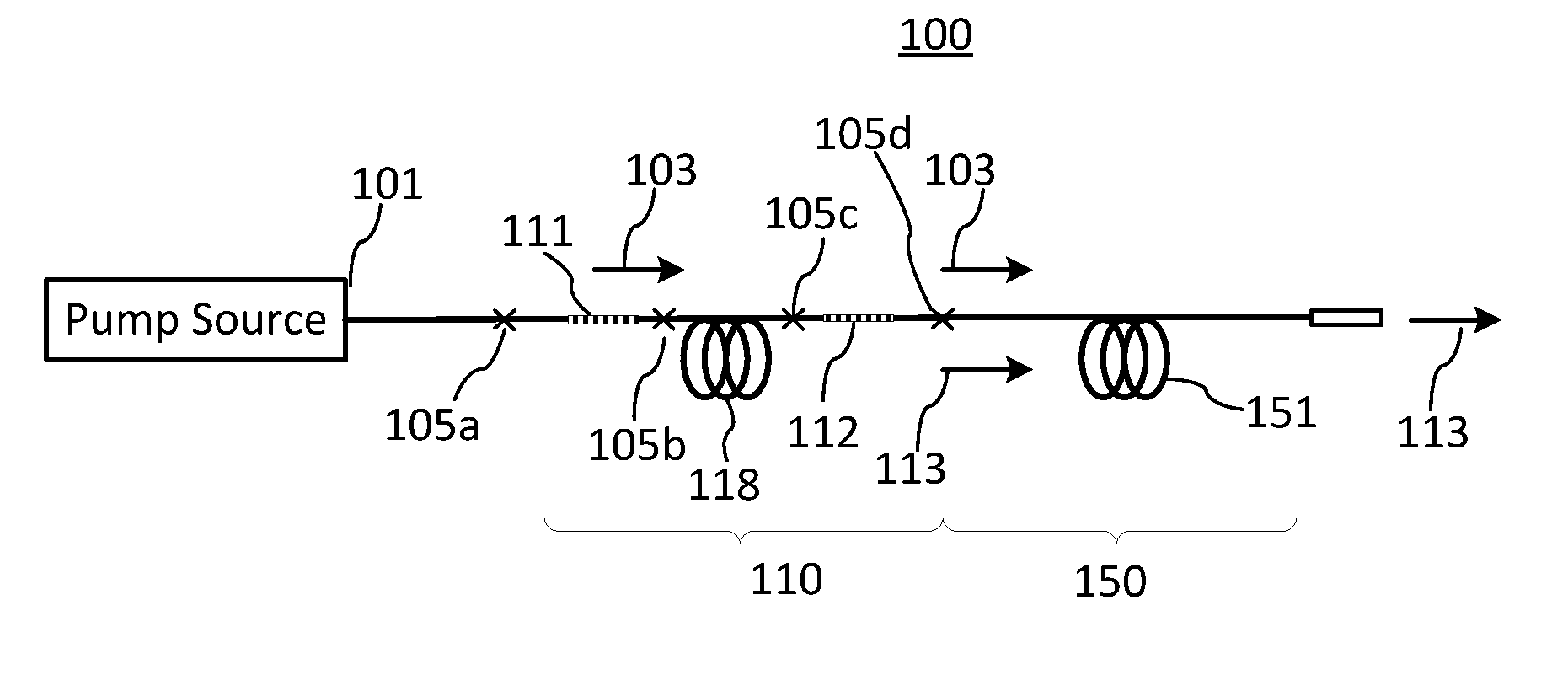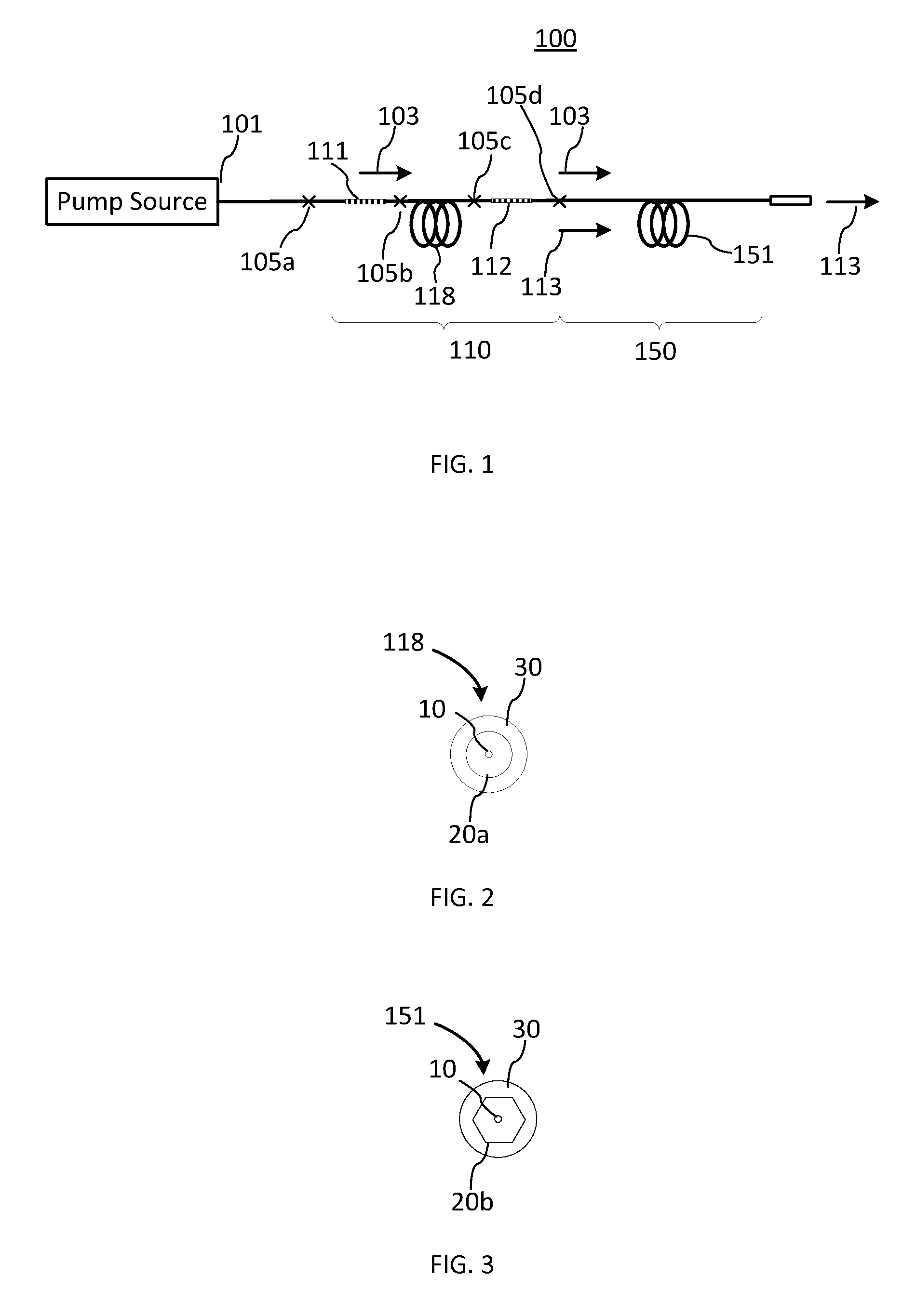Master oscillator—power amplifier systems
a power amplifier and oscillator technology, applied in the field of fiberoptic light sources, can solve the problems of limited packaging options, low system efficiency, and inability to provide pump diodes with sufficient brightness to efficiently launch into the core, and achieve the effect of enhancing the absorption of pump light and low loss
- Summary
- Abstract
- Description
- Claims
- Application Information
AI Technical Summary
Benefits of technology
Problems solved by technology
Method used
Image
Examples
Embodiment Construction
[0018]In the following description, for purposes of explanation and not limitation, specific details are set forth, such as particular optical designs, optical components, techniques, etc. in order to provide a thorough understanding of the present invention. However, it will be apparent to one skilled in the art that the present invention may be practiced in other embodiments that depart from these specific details. In other instances, detailed descriptions of well-known methods, devices, and circuits are omitted so as not to obscure the description of the present invention.
[0019]Note that as used herein, the terms “first”, “second” and so forth are not intended to imply sequential ordering, but rather are intended to distinguish one element from another unless explicitly stated. The term “double-clad optical fiber”, abbreviated as “DCF”, is used in this specification to refer to an optical fiber which has at least two waveguiding regions, one overlapping the other. “DCF” is unders...
PUM
 Login to View More
Login to View More Abstract
Description
Claims
Application Information
 Login to View More
Login to View More - R&D
- Intellectual Property
- Life Sciences
- Materials
- Tech Scout
- Unparalleled Data Quality
- Higher Quality Content
- 60% Fewer Hallucinations
Browse by: Latest US Patents, China's latest patents, Technical Efficacy Thesaurus, Application Domain, Technology Topic, Popular Technical Reports.
© 2025 PatSnap. All rights reserved.Legal|Privacy policy|Modern Slavery Act Transparency Statement|Sitemap|About US| Contact US: help@patsnap.com



